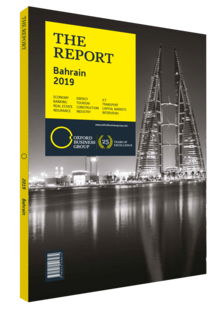Bahrain's plans for new international airport terminal take shape
Bahrain International Airport (BIA) will soon be housed in a new international air terminal which is currently being constructed at an estimated cost of $1.1bn. This project is a recipient of finance from the Gulf Development Fund, which plans to channel $10bn altogether into Bahrain.
The new 220,000-sq-metre new facility will be four times bigger than the existing terminal, with capacity to handle up to 14m passengers per year when operating at its highest level of service, an increase from the current terminal’s capacity of 9m. The authorities expect the terminal’s soft opening to take place in September 2019, at which time the existing terminal is anticipated to be demolished. The project will allow the kingdom’s economy to take advantage of increasing interconnectivity at both a global and Gulf level.
New Construction
The facility was designed by Aeroport de Paris Ingénierie under a $34m contract awarded in 2014. The construction contract was awarded to a consortium of Turkish airport specialist TAV and UAE-based contractor Arabtec in early 2016, with construction work beginning in spring of that year. Around 80% of funding for the project has been provided by the Abu Dhabi Fund for Development as part of a wider $2.5bn agreement reached in 2013 for GCC countries to finance ongoing development in Bahrain.
Facilities
The new terminal will include two arrivals halls with a combined size of over 5000 sq metres, eight baggage reclaim conveyor belts, a 4600-sq-metre departure hall with 108 check-in counters and 24 gates. Passenger facilities will include 7000 car parking spaces and a 10, 000-sq-m duty-free shopping area, including a 1000-sq-m duty-free shop in the arrivals hall. National flag carrier Gulf Air also plans to build a passenger lounge that will be around two and a half times the size of the lounge at the existing terminal. New maintenance, repair and overhaul facilities, including a new dedicated maintenance hangar, a taxiway and new aprons are also set to be developed.
In January 2018 minister of transportation and telecommunications Kamal bin Ahmed Mohammed told media that French firm Société d’Études Techniques et Économiques had almost completed design work for the new facilities. The airport’s cargo facilities are also going to be upgraded as part of the airport modernisation programme.
Improved Connectivity
The new terminal will also benefit from improved connectivity to downtown Manama and beyond. The Manama light rail metro project, the first phase of which is due to begin operations in the early 2020s, will connect to the airport and provide a much needed link to the planned GCC rail network.
The authorities are also considering plans that would speed up road access from Manama city centre to the airport through the construction of an underpass, directly connecting BIA to one of the three causeways between the island of Muharraq, where the airport is located, and the mainland. A fourth causeway is also being built (see overview).
The additional capacity at the new facility will help to accommodate the expansion plans of Gulf Air, which is both adding routes to its network and working on upgrading its fleet.
More modern facilities will also help the airline in its drive to capture a larger share of the market for long-haul flights connecting via the GCC region, that are currently dominated by the Dubai-based Emirates, UAE flag-carrier Etihad and Qatar Airways.
The construction of the facility is part of a wider range of regional airport upgrades and expansion projects taking place as GCC countries seek to develop their domestic tourism industries. This will help them access an increasingly large share of the international long-haul aviation transit market.
You have reached the limit of premium articles you can view for free.
Choose from the options below to purchase print or digital editions of our Reports. You can also purchase a website subscription giving you unlimited access to all of our Reports online for 12 months.
If you have already purchased this Report or have a website subscription, please login to continue.

